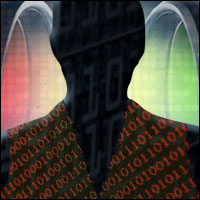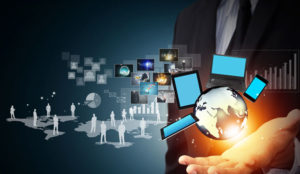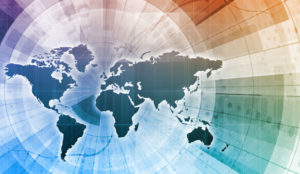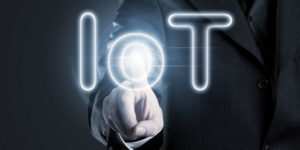
As the tug of war between humans and machines escalates, we’ve become witnesses on nearly a daily basis to events that suggest there won’t be an ultimate winner or loser in this existential battle for survival and supremacy.
Just take two little human mistakes that recently received worldwide attention because of the power of today’s technology to magnify their impacts on a global scale.
The first was the mistake made by a senior partner at PricewaterhouseCoopers, who was assigned to hand an envelope to an actor tasked to announce the best picture of the year. This is a task that has been performed flawlessly for decades. It is a job that has been practiced so often that a structured protocol has been established to ensure that it is handled seamlessly.
Ah, but human error can occur at any point, and in this case it was caused by various distractions at the crucial moment when the handoff was scheduled to occur. Ironically, the senior partner, who probably behaves in a machine-like manner on most days, fell victim to the temptation of technology as he admitted that he was tweeting a picture at the precise time he was supposed to be handing the most important envelope to the last presenters of the evening.
Amazon’s Cloudburst
Only a few days later, a technician working for Amazon Web Services inadvertently inputted the wrong instructions into the largest cloud provider’s systems during the course of an otherwise routine maintenance process, and succeeded in knocking out a major portion of the AWS network. The simple mistake impacted countless companies and other organizations that rely on AWS to support their websites, e-commerce and other online activities.
The error had a significant economic effect for those AWS customers and reignited questions of confidence regarding our over-reliance on cloud-based services. The irony in this case is that there may not be a more automated company on the planet than Amazon, and AWS has experienced unprecedented growth because of the power of its automated systems.
So, do these events add more fuel to the argument that automation is a good thing that can eliminate human error and make our daily lives better and less susceptible to costly mistakes?
Fourth Industrial Revolution
The fundamental question about the value of automation has been perplexing politicians, policymakers, innovators, business leaders and the general public since the days of the first industrial revolution. Depending on how you count your technological waves, we’re no closer to answering this question as we find ourselves in the midst of a fourth industrial revolution fueled by artificial intelligence and machine learning.
No one can deny that the advent of automation has created greater efficiencies, along with exponential scalability that never could be matched by humans. However, even the smartest people at Tesla couldn’t prevent its Autopilot-guided car from experiencing a fatal crash. Nor could Microsoft’s AI wizards prevent its Tay chatbot from spewing inappropriate tweets.
Now, plenty of people are lamenting that the accelerated pace of AI, ML and automated system deployment is calling into question what roles will be left for mere mortals.
What’s a Human to Do?
The question about the proper balance between AI, ML and automation versus the human touch of real people is especially important in the rapidly changing world of customer experience and engagement. Because of the tremendous success of e-commerce, many companies and other organizations that interact with customers have set a frantic pace for adoption of the latest cloud and Internet of Things technologies to digitize their products, services and business environments.
There is no denying that these new systems are creating more convenient on-demand solutions that in many cases are doing a better job of matching the products and services to meet customers’ wants and needs with far less friction than their predecessors. However, as they remove the human factor from the equation, they also impersonalize the very things the technology promised to personalize in the process.
Despite today’s political rhetoric calling for a return to the old days, before people were replaced by machines and then watched their jobs shipped overseas, only the darkest vision of a world rid of innovation will derail the inevitable advancements of technology, automation and AI.
Fortunately, there are lots of thought leaders who are working hard to paint a different picture of the future, and a growing number of real-world success stories suggest that it is possible. Bruce Springsteen’s “Glory Days” may be gone, but a better balance can be achieved if we figure out new ways for humans and machines to collaborate with each other, rather than looking at this relationship as a zero-sum game.






















































Social Media
See all Social Media